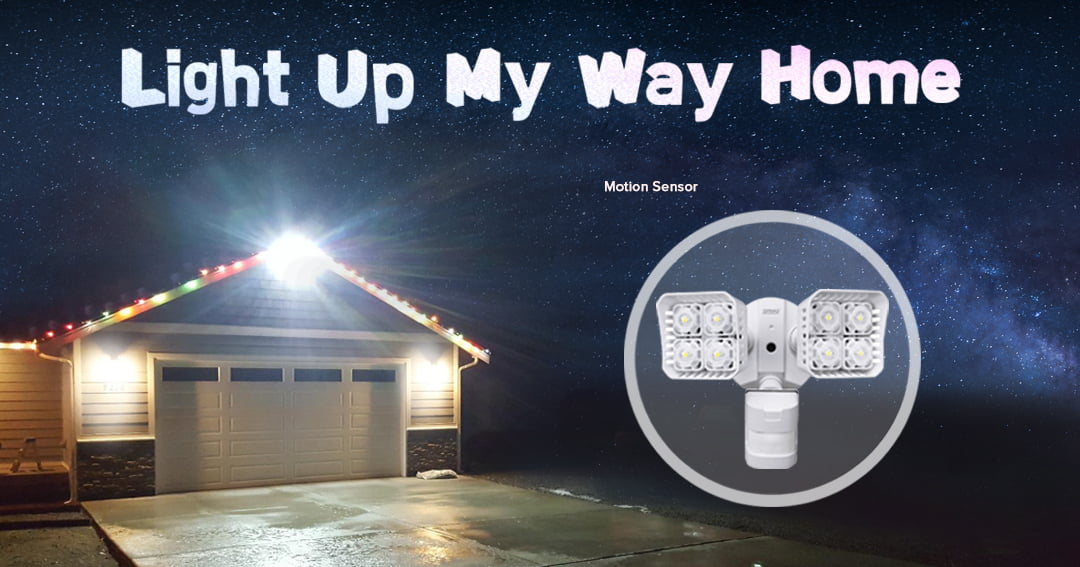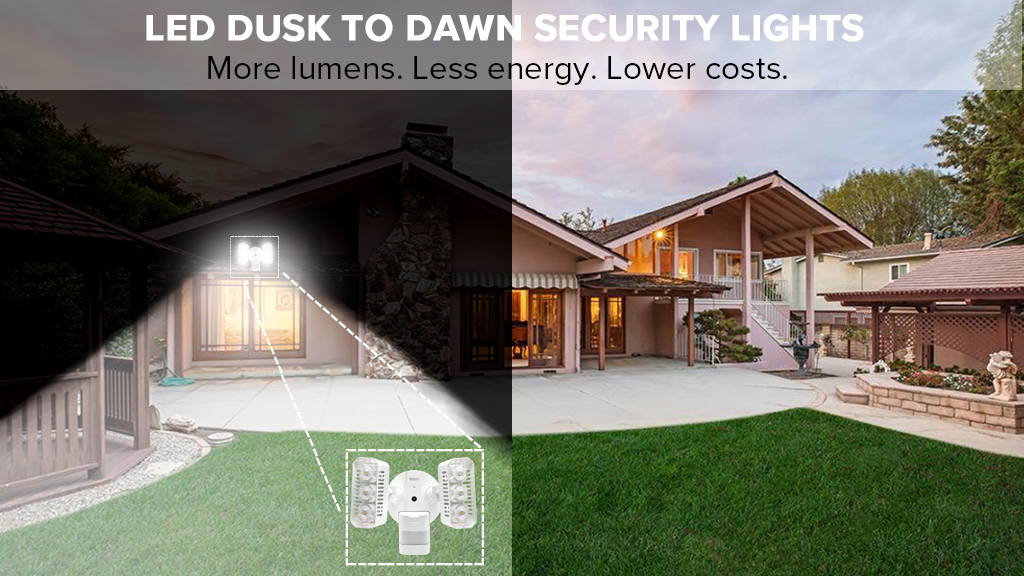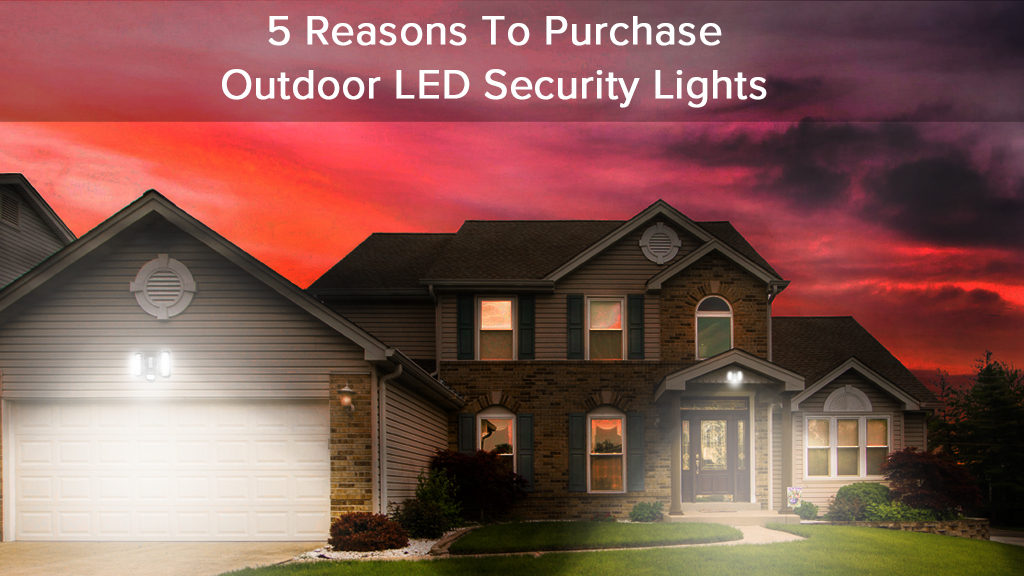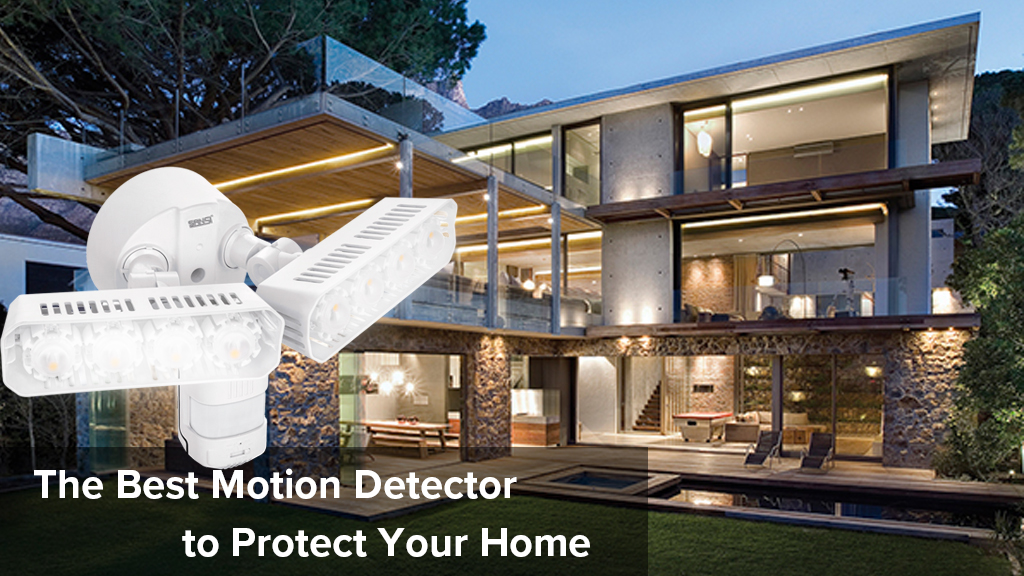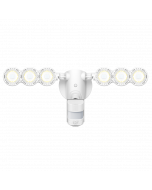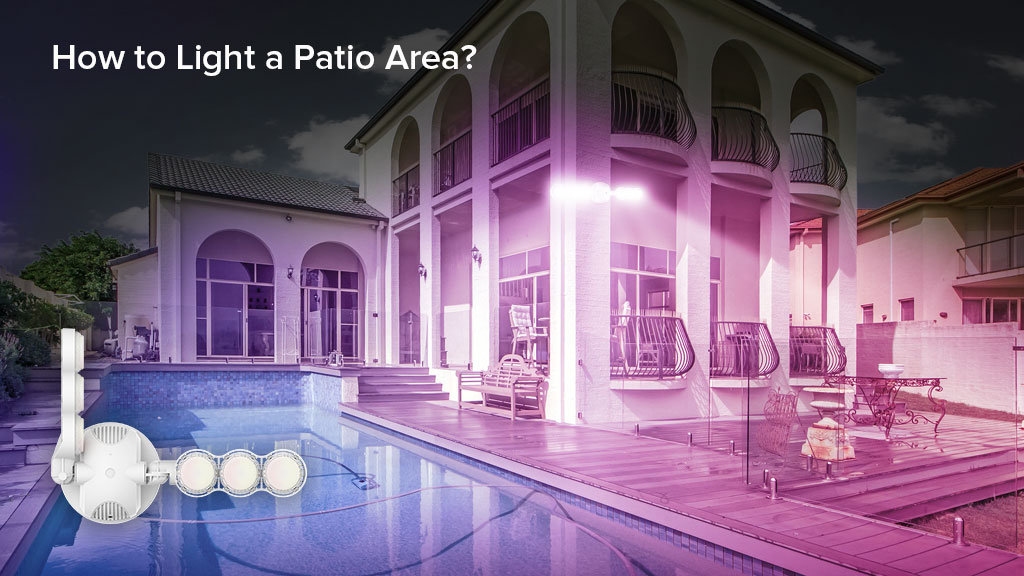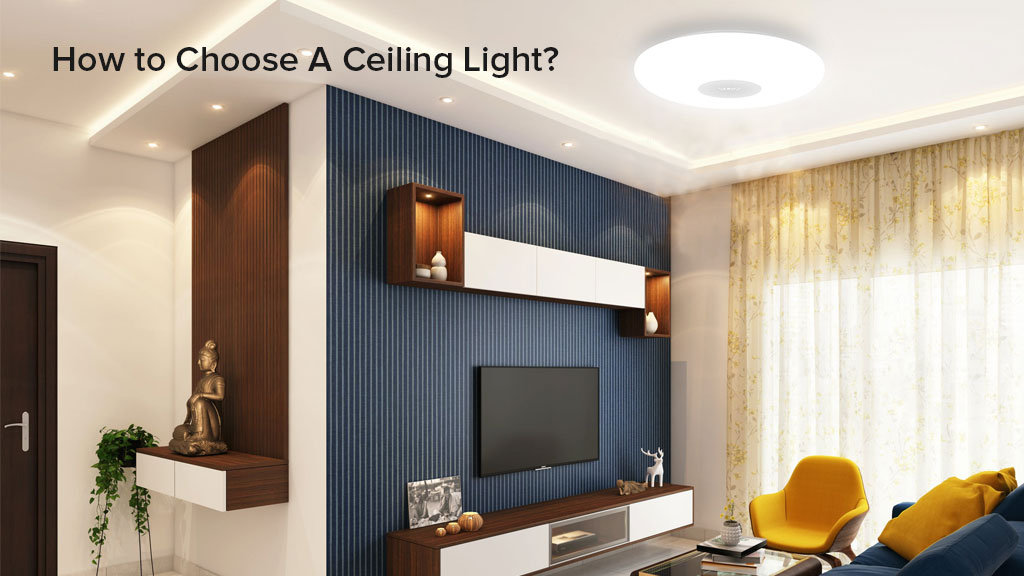What Are The Advantages & Disadvantages of Motion Sensor Security Lights?
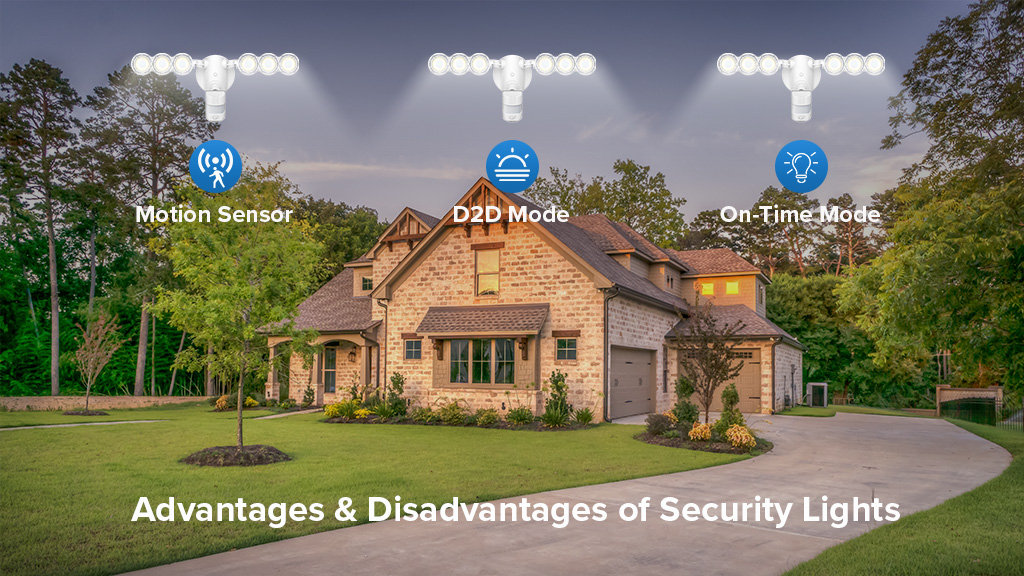
Motion sensor security lights are one of the best home security devices you can purchase. Although they’re definitely needed for the exterior of your home it is important to look at the pros and cons of having them in order to use them optimally. So let’s take a look at what are the benefits and drawbacks to motion sensor security lights.
Advantages of Motion Sensor Security Lights
The advantages of Motion sensor security lights can be categorized into what the lights give you and what the motion sensor brings to your home:
Energy Saving: Especially using LED security lights, the amount of light you get compared to the energy consumed you will save a lot of money. LED security light systems work incredibly efficiently, using D2D modes, switching off in the day and on at night. Saving you heaps on energy costs!

Convenient: LED security lights, especially those with various modes just simply need to be installed and turned on. After they’re installed and on, they never require anymore maintenance or time. Saving you heaps on time and effort while protecting your home!

Active Deterrents: Motion sensor outdoor lights deter animals and trespassers away from your property. They can deter unwanted people or animals during the day or night as they will either be spotted or emit a bright light that will increase the safety of your home at night.

Security light Disadvantages
Distracting: Security floodlights output bright wide beams that are made to grab attention. However, If you live in a busy area or street where cars, people, or animals frequently pass by, they may become a nuisance. If a security light is always illuminating on unnecessary triggers, it loses its effectiveness.
High Initial Cost: If you’re buying LED outdoor motion sensor security lights, they may come with various modes. The brighter the lights are and the more modes they have will bump up the price. For an effective outdoor security light that’s going to have over 2 working modes, will be anywhere between 30-50 $.

Luminaires may burn out: Depending on the quality of the light and the frequency of triggers the light receives will determine the light’s lifespan. If the light is triggered very often the luminaire’s life may be shortened. Meaning the light was expensive and didn’t last as long as expected. However, to eradicate this issue look for high-quality lights and high-quality LED’s as their frequent startups and usage shouldn’t affect their lifespan.
Motion Sensor Advantages
The motion sensor along with the floodlights themselves is maybe the key component of an outdoor security light. So, it’s important to look at the pros and cons of motion sensors too when discussing security lights.
Motion Sensor Advantages
Grab Attention: Motion sensors are reactionary; this means once they sense motion they’re activated and illuminate the area. Drawing attention to the vicinity they are in.
Simple to Install: Motion sensors usually come with security lighting units now, saving you extra installation bother and maintenance. They’re simple to put up and work immediately, making them a great security option.
Long Lifespan: Motion sensors are incredibly durable and long-lasting. They work well with no defects for many years as the technology of them has been working on for a long time. They will work and require no maintenance for a long time while protecting your home. Making them a low-cost good investment.
Motion Sensor Disadvantages
Any Motion Triggers PIR Sensors: PIR sensors are common and sense any change in temperature within the sensory coverage. Meaning they will make the light react to any movement sensed within 10-15 meters. The main issue with heat sensors is that they react to any heat changes, so if they’re installed near a heater or air conditioning unit, they may also have false triggers. Reducing the effectiveness of the light.
Passive Motion Sensors: They struggle to work in temperatures above 35 degrees C. This could be an issue in warmer climates, especially is the temperature doesn’t drop during night time. The motion sensor may be impacted.
Passive Motion Sensors: If the object moves very slowly or directly towards the motion sensor, the sensor will be less sensitive in detecting objects moving towards it rather than horizontally. Humans or animals may become aware of this and move very slowly or directly towards the sensor to prevent triggers.
What’s The Best Security Light Option?
SANSI 45W LED Security light brings with it a heap of benefits! Although there is a slightly higher initial cost, you’re guaranteed quality and 5-year warranty, making the high price risk free. This light has twin adjustable heads meaning it can be installed anywhere on a home or commercial building.
Ceramic over aluminum
SANSI adopts COC technology and patents in order to promote more efficient heat dissipation. The hollow body design combined with their ceramic heat sinks makes their lights brighter and more efficient compared to traditional aluminum LED lights. Aluminum LEDs contain PC boards, thermal adhesives, and internal fans, whereas ceramic heat sinks will passively promote heat dissipation away from the LED chips.
If you’re looking for a bright practical security light the SANSI LED 45W Outdoor Security Light is one of the best currently on the market, with 4 working modes, superior heat dissipation, and bright wide coverage, you can’t go wrong!




